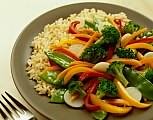1) Myth: Fellatio Greatly Reduces a Woman's Risk Factor for Breast Cancer
Truth: An email circulated with a link to what appeared to be a bonafide CNN news story claiming that a study found that women who performed fellatio reduced their risk of breast cancer. The truth is that there is no evidence that performing fellatio will reduce your risk of cancer. Fellatio is an oral stimulation of Penis.
2) Myth: Designer Lipsticks Contain Lead that Cause Cancer.
Truth: The FDA regulates all cosmetics manufacturing. It is logical to think that if a lipstick contained an ingredient that is sure to cause cancer, it would be pulled from the shelves immediately. This email hoax is still popping up in inboxes and striking fear in women. It is a hoax and there is no brand of lipstick that can cause cancer. Read more about lipstick and cancer...
3) Myth: Wearing Deodorant Can Cause Breast Cancer.
Truth:There is so significant data that shows that wearing deodorant causes cancer, yet people are still buying into it. The suggestion is that a chemical is absorbed through the skin through a shaving nick or cut, and causes breast cancer. Again, there has been no significant study to support this claim.
4) Myth: Piercing Your Nipples May Causes Breast Cancer in Men and Women
Truth: An injury to the breast or nipple cannot lead to cancer development. The only real medical risk factor for piercing the nipple is infection. Read more about pierced nipple and cancer...
5) Myth: Men Don't Get Breast Cancer.
Truth: Just ask Richard Rountree, the star of Shaft if men get breast cancer. Male breast cancer may be less common than breast cancer in females, but it does happen.
6) Myth: There is a Cure for Cancer, but Drug Companies Wouldn't Make Money.
Truth: If this was true, how come the family members of these drug company employees are still suffering from cancer? The likelihood of there being a general cure for all cancers is not realistic because they are caused by different factors. It is estimated that almost 30% of Americans believe this myth.
7) Myth: Forwarding Emails to Friends Will Donate Money to Cancer Charities.
Truth: Aol, The American Cancer Society, or any other major corporation does not rely on the use of email forwarding to make charitable contributions. The email sent usually contains the story of a child with cancer, perhaps with a photo, claiming that for every person your forward the email to the child will receive $.03 for treatment costs. Don't waste your time forwarding, folks. This is a cancer hoax and myth.






